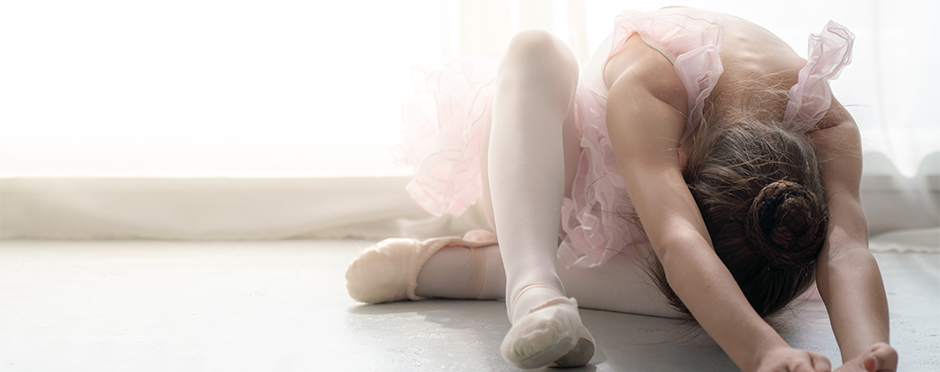
Common Hip Injuries in Dancers
Leave a CommentHip injuries in dancers comprise about 17.2% of all muscular and bony injuries. These injuries are often hard to diagnose because many have overlapping signs and symptoms. Injuries can occur for a variety of reasons. Some injuries are traumatic from a fall, contact, or another impact like a fracture or an avulsion (where a muscle can yank on its bony attachment and pull some bone loose). Additional injuries can come from overuse and result in tendinitis (or other tendinopathies), bursitis, snapping hip, strain, or a labral tear. Some are bony, like Femoral Acetabular Impingement (FAI) or dysplasia. Whatever the cause, a hip injury can be frustrating for a dancer.
Contributors to Injuries
Since dance involves great flexibility, it is essential to discuss turnout and stretching as they affect hip injuries. Fatigue, the number of hours danced, age, gender, race, and type of dance can all contribute to a hip injury. Some factors, like your age, you can’t change, but you can work on other factors to affect your level of fatigue and limit extreme stretching and forcing your turnout.
Turnout
All hips are made differently and have variable levels of flexibility and turnout. While it might be easy for some dancers to achieve a 180-degree turnout, it might be impossible for others. Your anatomy has a lot to do with this and your age since hips have different orientations that vary from person to person. In scientific terms, they are called retroversion (more of a turned-out position) or anteversion (more of a turned-in position) because the acetabulum (the socket where your femur fits in) and the part of the femur that fits into the acetabulum are more inclined to be turned out or pigeon-toed. These orientations continue to change from a more toed-in posture during the toddler years (think of the little kids in class that can make a backward fifth position) to more of a turned-out inclination until you are about 15 years old.3 The bottom-line is don’t force your turnout and work on your muscle strength using the exercises below so that you can hold the turnout you have right now.
Stretching
Excessive or extreme stretching, such as the over splits can decrease the stability of the capsule (the band of ligaments surrounding the hip joint). Excessive stretching can lead to an increased risk for injuries. Stretching your hips like this can make them weaker and increase your risk for injuries.
Overuse Muscles
Hip flexor (a muscle in the front of the hip) and gluteal (buttocks muscles) are the most common types of tendonitis in dancers. Tendinitis is inflammation of the tendon or where the muscle connects to the bone and is often caused by overuse with increased lifting (like adagio movements) or more forceful grande battement motions. Sometimes they can result in snapping hip. Intrinsic snapping hip is when the hip flexor snaps over the hip capsule. Extrinsic snapping hip is when the Iliotibial Band (or the side of the hip band) snaps over the greater trochanter (the side of the femur). Sometimes it looks like the hip is dislocating as a dancer sits into the side of the hip, and the band pops over. Don’t worry. It’s not. It takes a lot of force to dislocate a hip.
Types of Hip Injuries
FAI and Labral Pathology
These two conditions often go hand-in-hand but happen in isolation as well. Femoral Acetabular Impingement (FAI) is when the tip of the acetabulum OR the head/neck of the femur (leg bone) has increased bone growth. Over time this may tear the cartilage that lines the rim of the acetabulum known as the labrum.
Hip Muscle Avulsion
These can happen if a forceful muscle contraction pulls a piece of bone from the hip. Sometimes these occur in adolescents going through a growth spurt or when jumping or quickly changing directions.
3 Exercises to Help Strengthen the Hip
Often in a hip injury, the quads or muscles along the front of the legs or the erector spinal muscles in the lower back work too hard, and the glutes and the core muscles do not work hard enough. Here are some dance-specific exercises to help strengthen your hip.
1. Bridges with Turnout Muscles Working
- Find a strap or band if you have it.
- Assume a bridge position with your hips lifted just in line with your body. Be careful not to put your hips too high, as this makes the exercise easier.
- Keeping one leg still, move the other hip to the side with your hips staying still and lifted.
- You should feel this on the outside and back of the hips where your turnout muscles are.
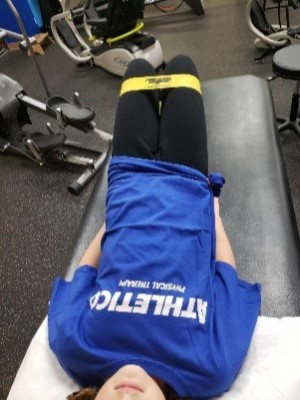
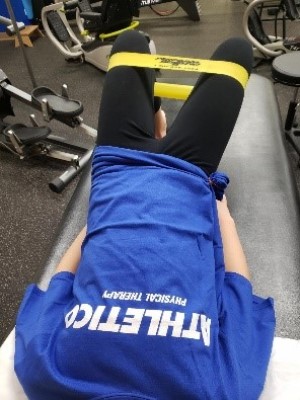
2. Quadruped Hip Extension
- Start on all fours with the head in line with your back.
- Make sure you don’t arch your back and concentrate on your hamstring (the muscle on the back of your leg) as you extend one leg to hip height keeping the knee straight.
- This exercise works your core, and the increased degree over the table or your couch can improve hip muscle activation.
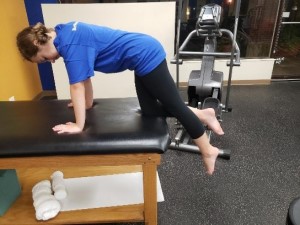
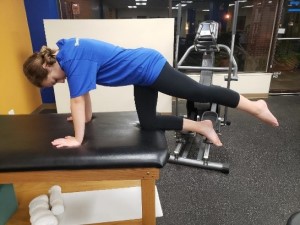
3. Quadruped Circumduction
- Assume the same position as above.
- If you don’t have a ball use a towel roll and squeeze your hamstring tight while you circle the leg clockwise and counterclockwise.
- You should feel this in the back of the legs and the core.
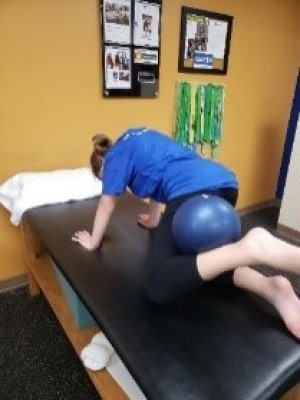
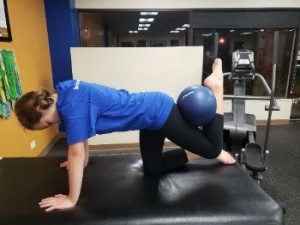
Find a Physical Therapist Near You
If you have questions about your hip, reach out to a physical therapist near you. You can schedule a free assessment to talk about your hip pain where your physical therapist can help decide if physical therapy is right for you.
The Athletico blog is an educational resource written by Athletico employees. Athletico bloggers are licensed professionals who abide by the code of ethics outlined by their respective professional associations. The content published in blog posts represents the opinion of the individual author based on their expertise and experience. The content provided in this blog is for informational purposes only, does not constitute medical advice and should not be relied on for making personal health decisions.
References:
1. Trentacosta, Natasha, et al. “and Groin Injuries in Dancers: A Systemic Review.” Sports Health, vol. 9, no. 5, 7 Aug. 2017, pp. 422–427., journals.sagepub.com/doi/abs/10.1177/1941738117724159.
2. Kerbel, Yehuda E, et al. “Download PDF Open EPUB Full Article Content List Abstract Methods Results Discussion Conclusion Acknowledgment References Figures & Tables Article Metrics Cite Share Request Permissions Related Articles Epidemiology of Hip and Groin Injuries in Collegiate Athletes in the United States .” Orthopedic Journal of Sports Medicine, May 2018, journals.sagepub.com/doi/pdf/10.1177/2325967118771676.
3. Michael T Cibulka, Determination and Significance of Femoral Neck Anteversion, Physical Therapy, Volume 84, Issue 6, 1 June 2004, Pages 550–558, https://doi.org/10.1093/ptj/84.6.550
